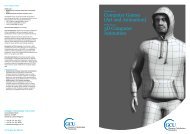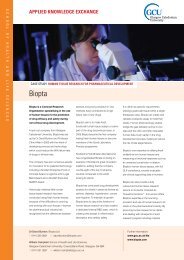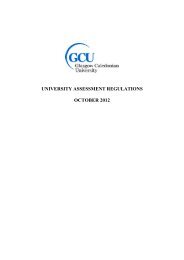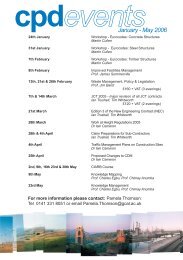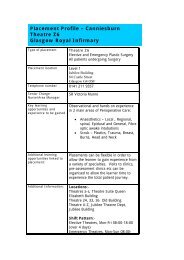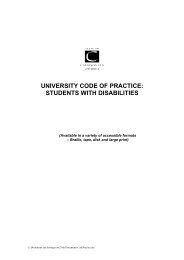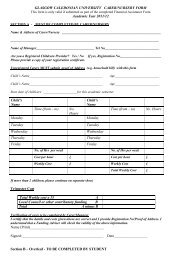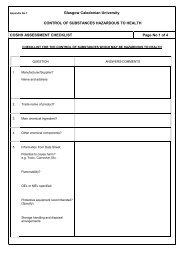Healthy Heart OH Leaflet
Healthy Heart OH Leaflet
Healthy Heart OH Leaflet
Create successful ePaper yourself
Turn your PDF publications into a flip-book with our unique Google optimized e-Paper software.
Guide to a healthy heart<br />
Eat a healthy diet<br />
High cholesterol levels in the blood<br />
increase the risk of developing CHD by<br />
causing the build up of fatty plaque in the<br />
artery walls that can harden and narrow<br />
the arteries. Nearly half of all deaths from<br />
CHD in the UK are thought to be caused by<br />
raised blood cholesterol.<br />
High cholesterol can be caused by a<br />
number of things such as smoking and<br />
physical inactivity. However, the key<br />
influence is diet and, in particular, the intake<br />
of saturated fats. Making a few simple<br />
changes to your diet can dramatically affect<br />
your cholesterol levels and heart health.<br />
The key to a healthy diet is to eat a wide<br />
variety of foods, in the right quantities, to<br />
match your body’s need for energy and<br />
nutrients. A third of the food you eat should<br />
be fruit and vegetables.<br />
Another third should be starchy foods such<br />
as bread, cereals, pasta, rice and potatoes<br />
– wholegrain and wholemeal varieties are<br />
best because of their fibre content.<br />
And the remaining third should include<br />
a moderate amount of dairy food, meat,<br />
fish and vegetarian alternatives and small<br />
amounts of foods containing fats and sugar.<br />
Quick fact<br />
On average a heart<br />
pumps 100,000 times<br />
every day pumping a<br />
total of 7,200 litres of<br />
blood over 19,000km! 2<br />
Make your diet a heart-healthy one with<br />
two small but significant steps:<br />
Fat<br />
Reduce the total amount you eat and<br />
avoid saturated and modified fats as<br />
much as possible. These fats lead to blood<br />
cholesterol levels that are unhealthy for<br />
your heart and arteries. Replace saturates<br />
with mono-unsaturated fats and choose<br />
foods containing omega-3 fatty acids -<br />
these types of fat are beneficial to your<br />
heart and arteries.<br />
Salt<br />
Our bodies do need small amounts of<br />
salt but eating too much is linked to high<br />
blood pressure, one of the risk factors for<br />
heart disease. Adults should have 6 grams<br />
of salt per day which equates to roughly<br />
a teaspoon. This is reached very quickly<br />
because there is so much salt in the foods<br />
we buy. In fact, a staggering 75% of the salt<br />
we eat comes from processed foods alone.<br />
Cutting down on your salt intake is easy.<br />
Try to avoid adding salt whilst cooking and<br />
then again at the dinner table and check<br />
food labels when you’re at the supermarket.<br />
<strong>Heart</strong> disease<br />
One of the most common diseases to affect the heart is coronary heart disease (CHD). The<br />
blood supply that takes oxygen and nutrients to your heart is provided by a network of blood<br />
vessels on the surface of your heart called coronary arteries. Coronary heart disease is the term<br />
that describes what happens when your heart’s blood supply is blocked or interrupted by a<br />
build up of fatty substances in these arteries.<br />
Over time, the walls of your arteries can become furred up with fatty deposits. This process<br />
is known as atherosclerosis and the fatty deposits are called atheroma. If your coronary<br />
arteries become narrow, due to a build up of atheroma, the blood supply to your heart will be<br />
restricted. This can cause angina. If a coronary artery becomes completely blocked, it can lead<br />
to myocardial infarction - commonly known as a heart attack.<br />
Angina<br />
Angina is the main symptom of CHD,<br />
caused by insufficient oxygen reaching the<br />
heart muscle because of reduced blood<br />
flow. It can be a mild, uncomfortable<br />
feeling that is similar to indigestion.<br />
However, a severe angina attack can cause a<br />
feeling of heaviness or tightness, usually in<br />
the centre of the chest, which may spread<br />
to the arms, neck, jaw, back or stomach.<br />
Angina is often triggered by physical<br />
activity or emotionally stressful situations.<br />
The symptoms usually pass within about<br />
10-15 minutes and can be relieved by<br />
resting or using a nitrate tablet or spray.<br />
<strong>Heart</strong> attack<br />
Unfortunately, for many people the first<br />
indication that something is wrong is a<br />
heart attack. This happens when the blood<br />
supply to a part of the heart muscle is<br />
completely interrupted or stops, usually<br />
when a blood clot forms in a diseased<br />
coronary artery that’s already become<br />
narrowed by atherosclerosis.<br />
Sometimes the pain of a heart attack can<br />
be mild and symptoms can be similar to<br />
that caused by indigestion. Some people<br />
can even have a heart attack without<br />
experiencing pain. However, in most cases<br />
the pain of a heart attack is severe. Unlike<br />
angina, the pain doesn’t subside when you<br />
rest and symptoms can’t be relieved using a<br />
nitrate tablet or spray.<br />
Other heart attack symptoms include<br />
sweating, light-headedness, nausea and<br />
breathlessness.<br />
5<br />
2



